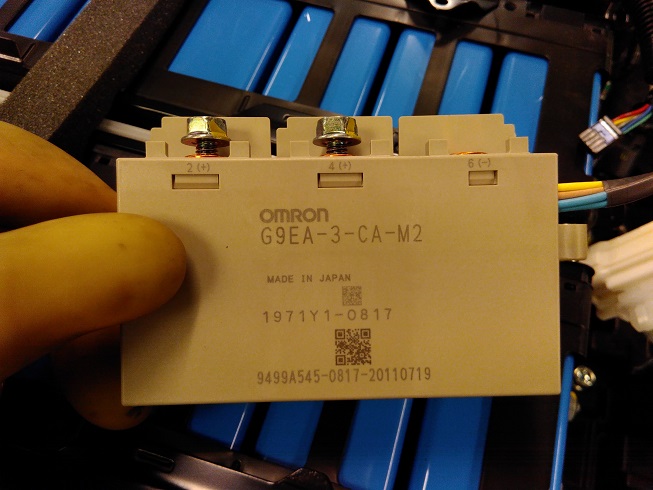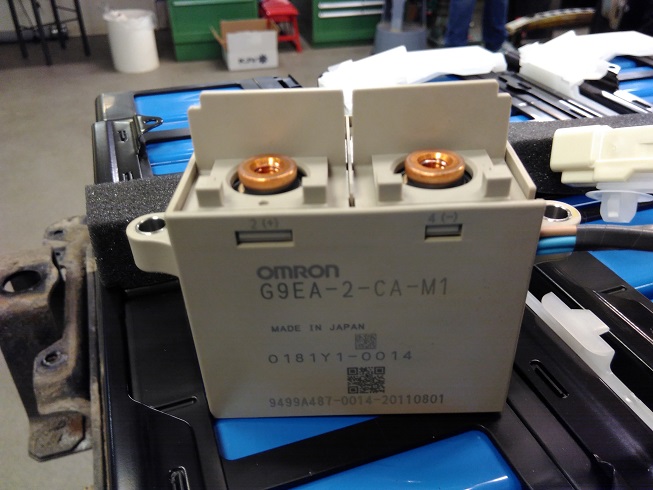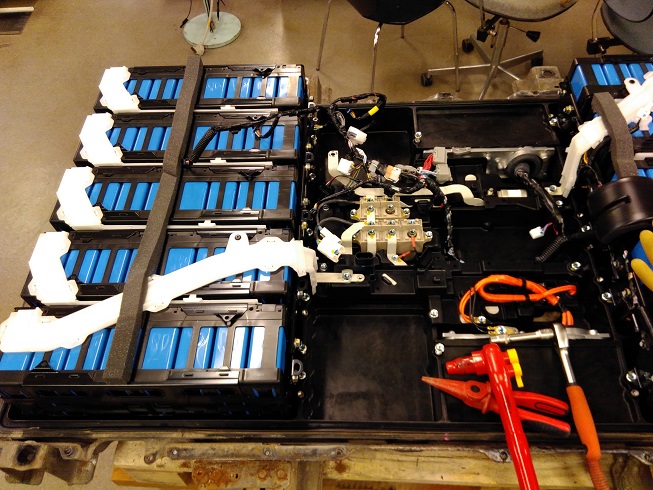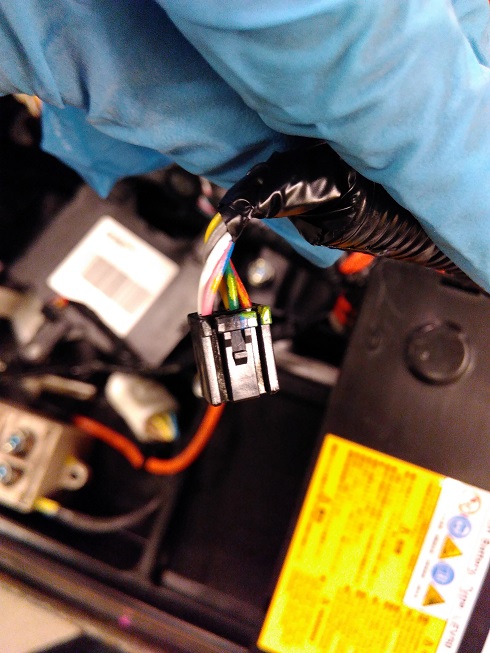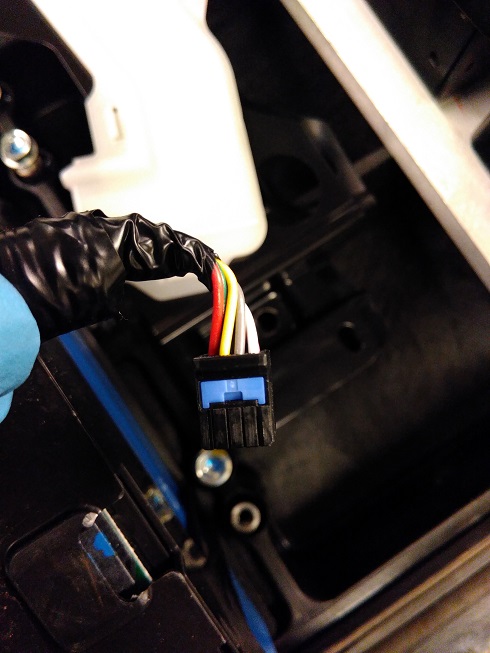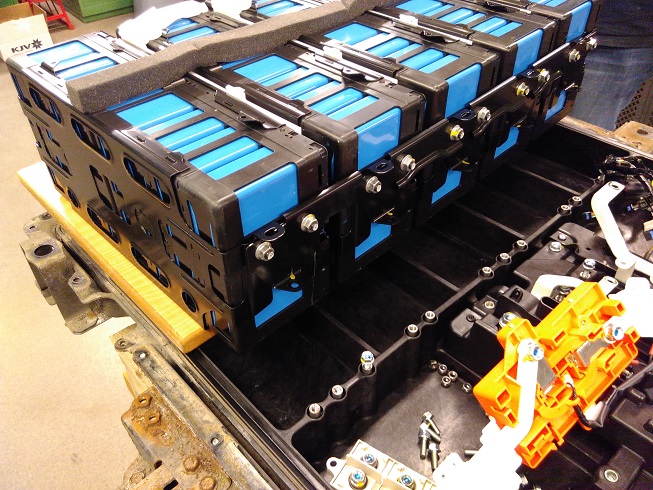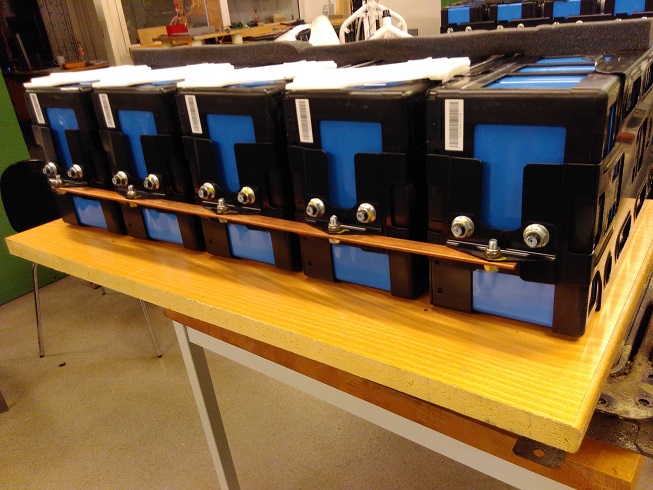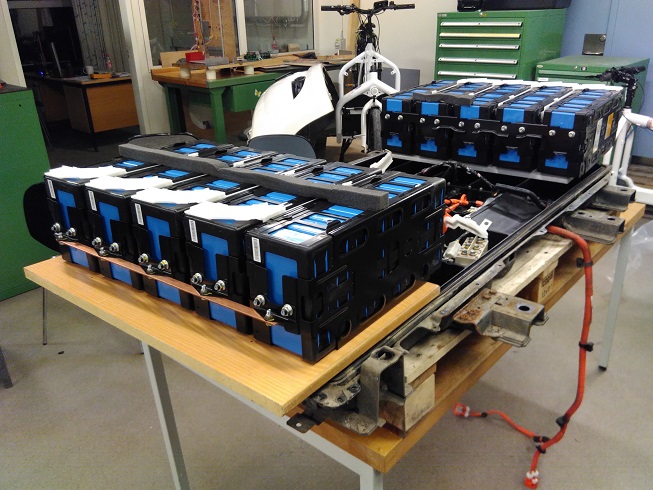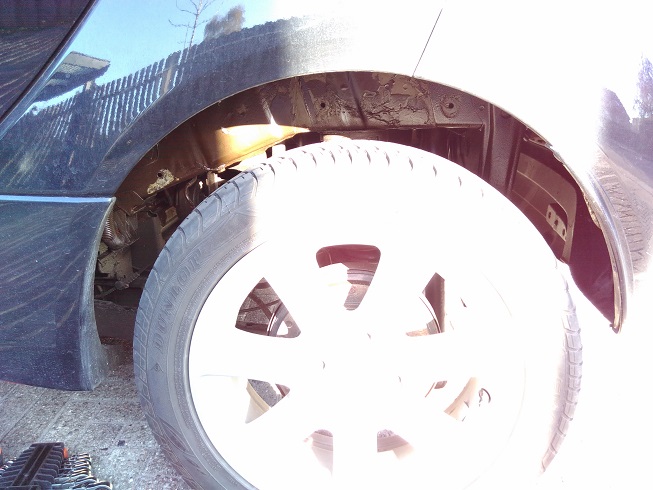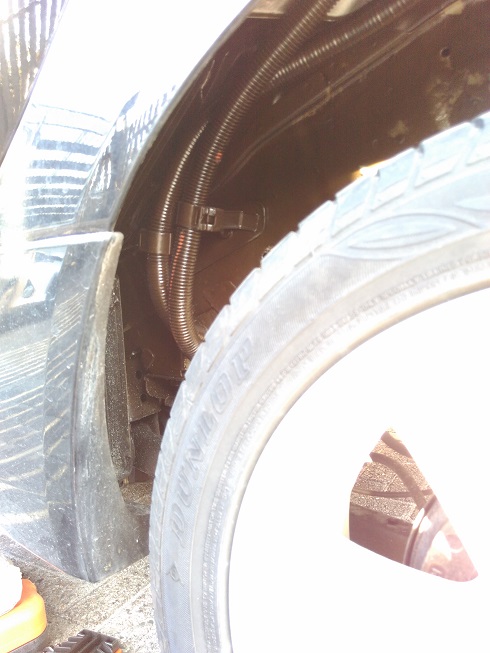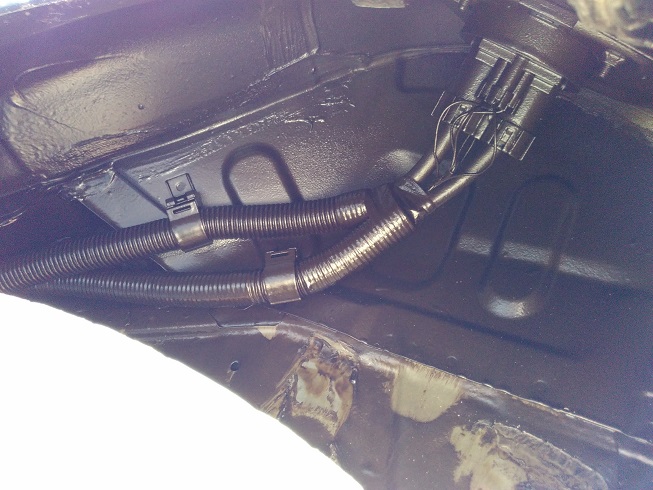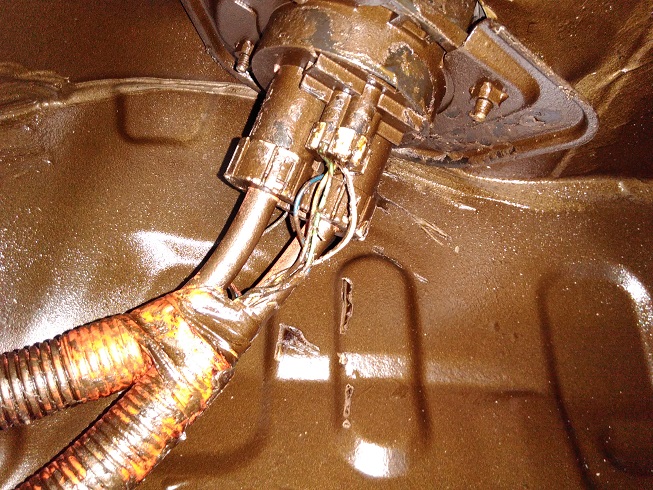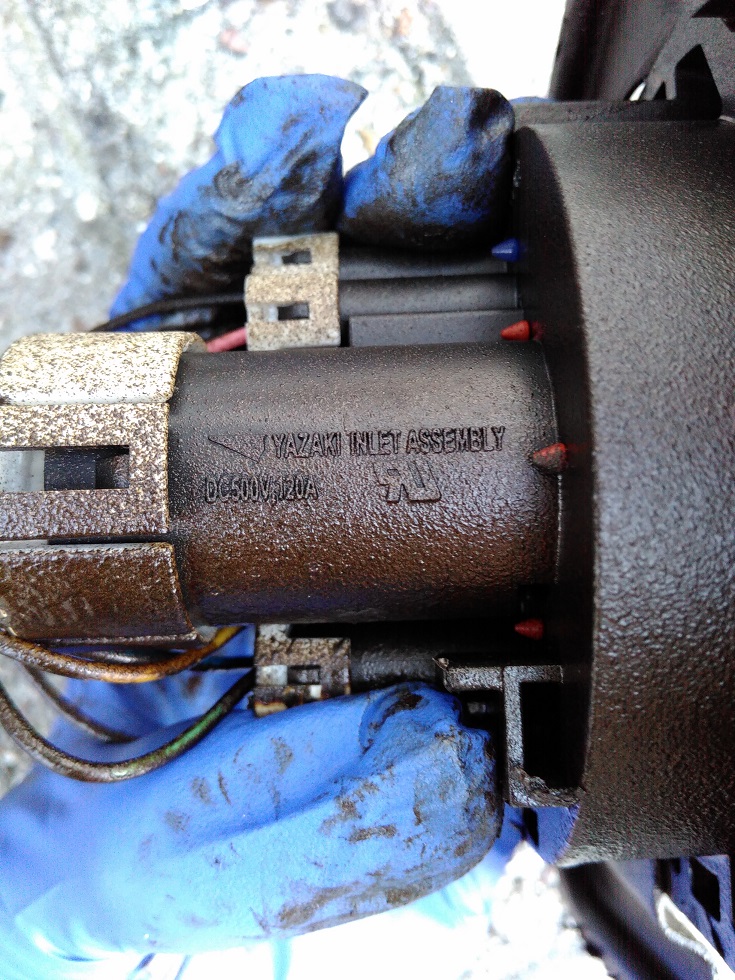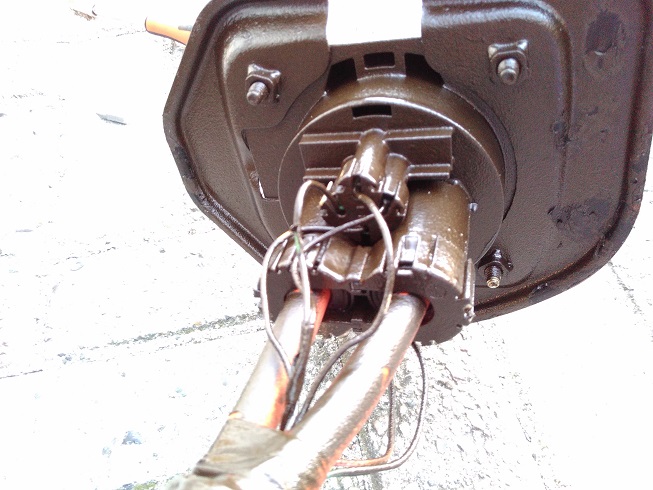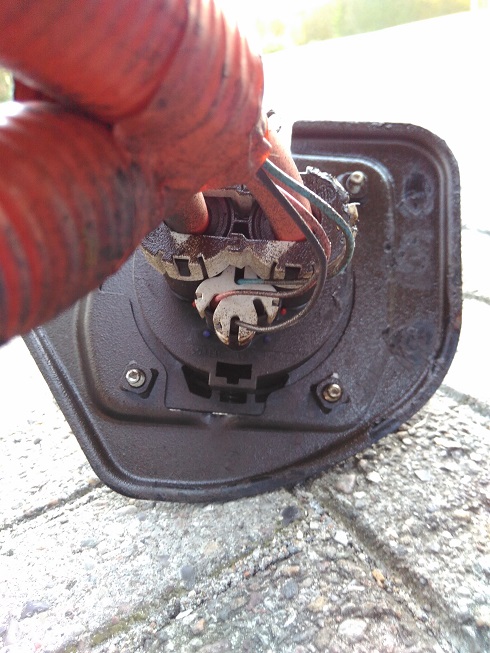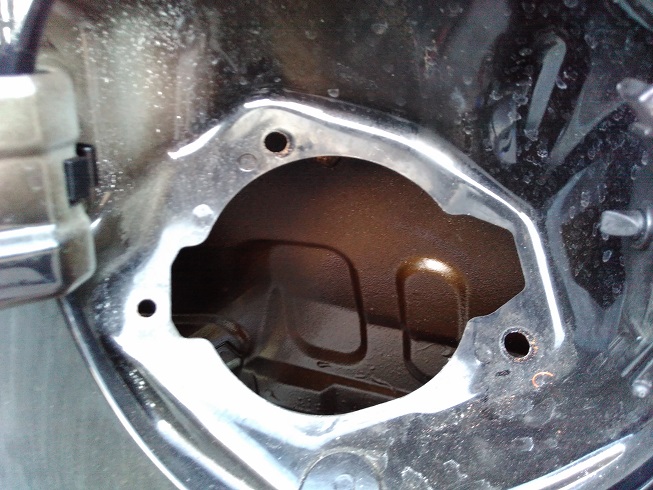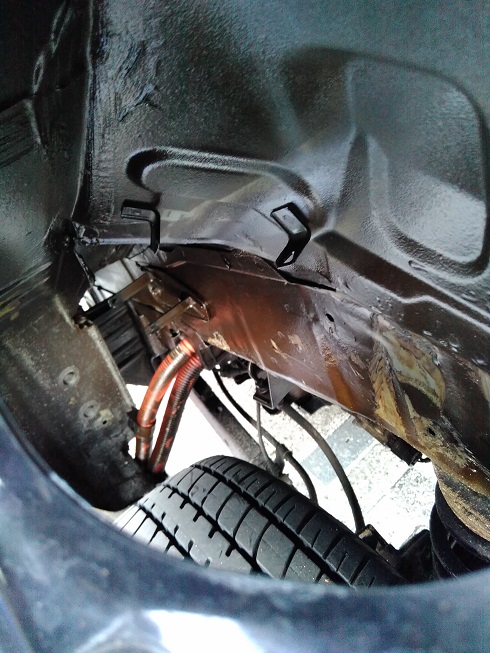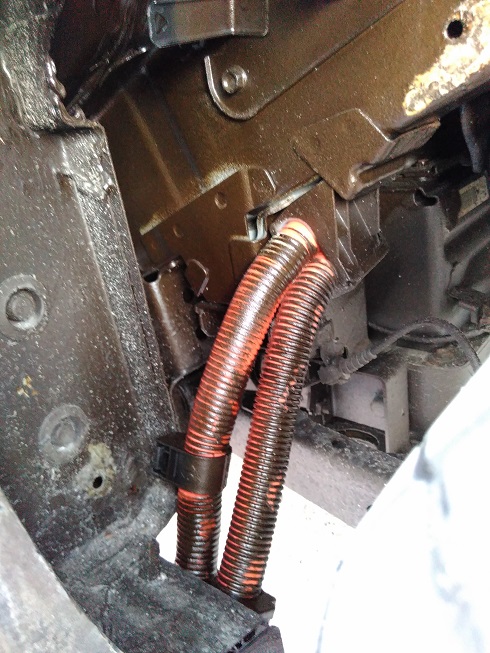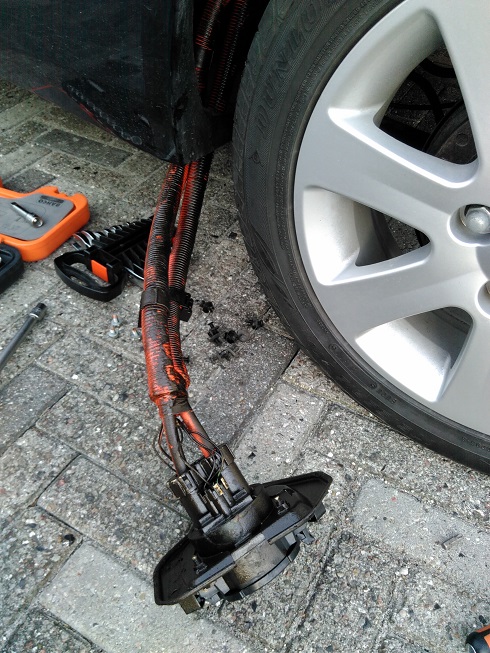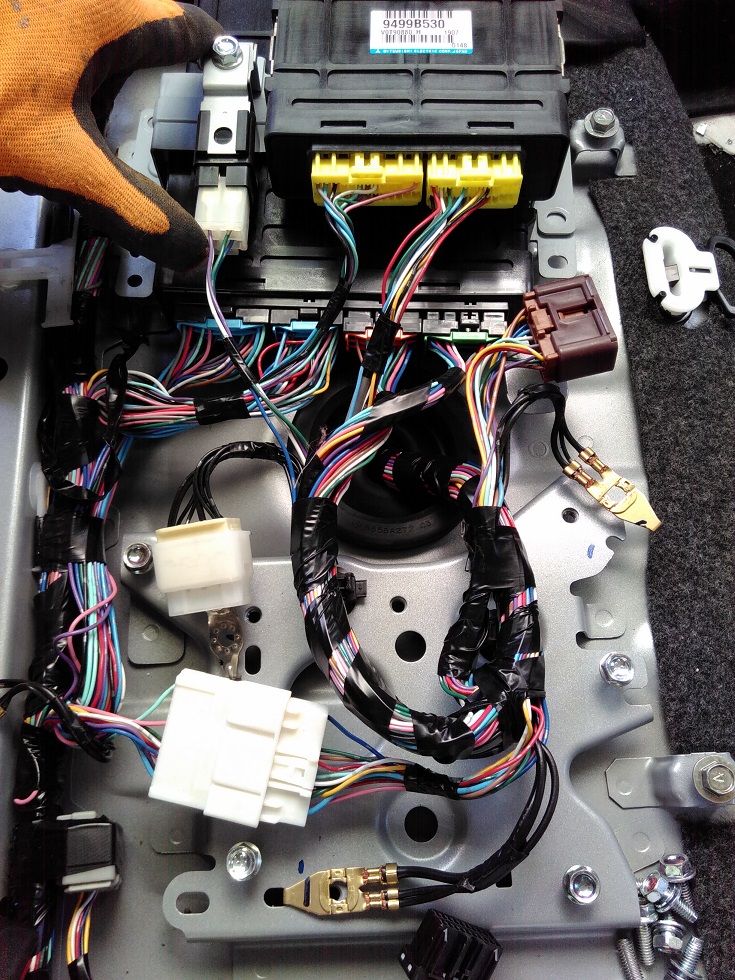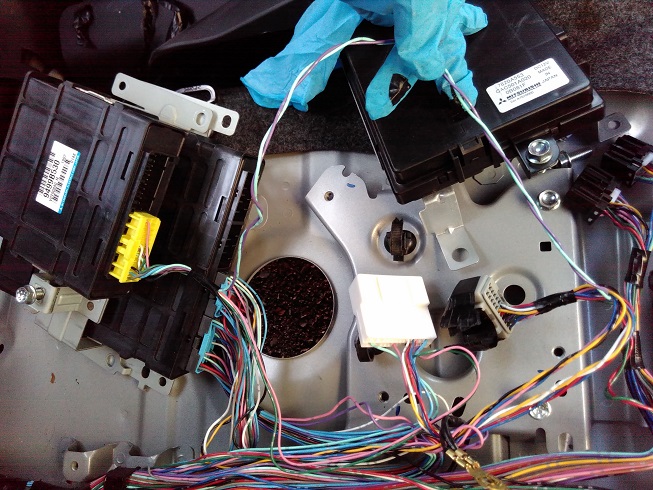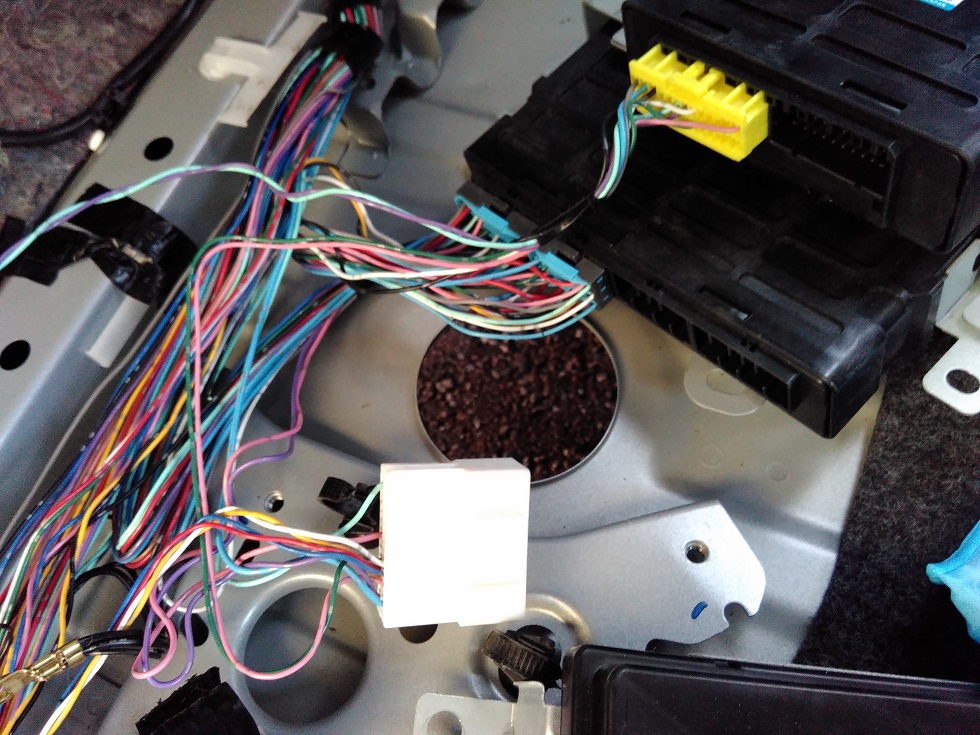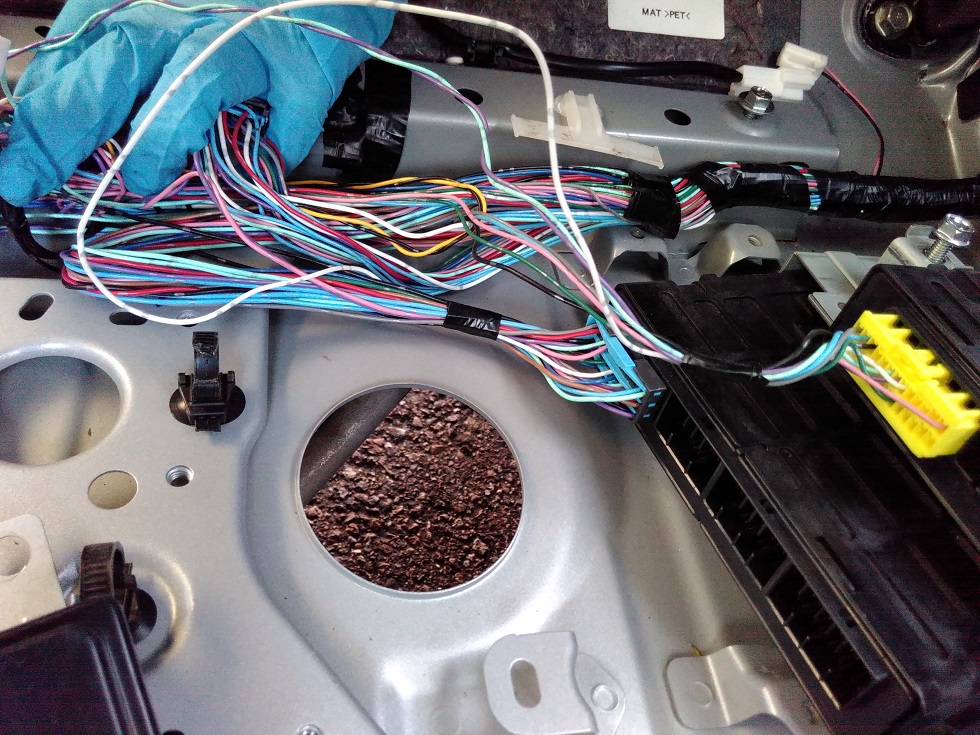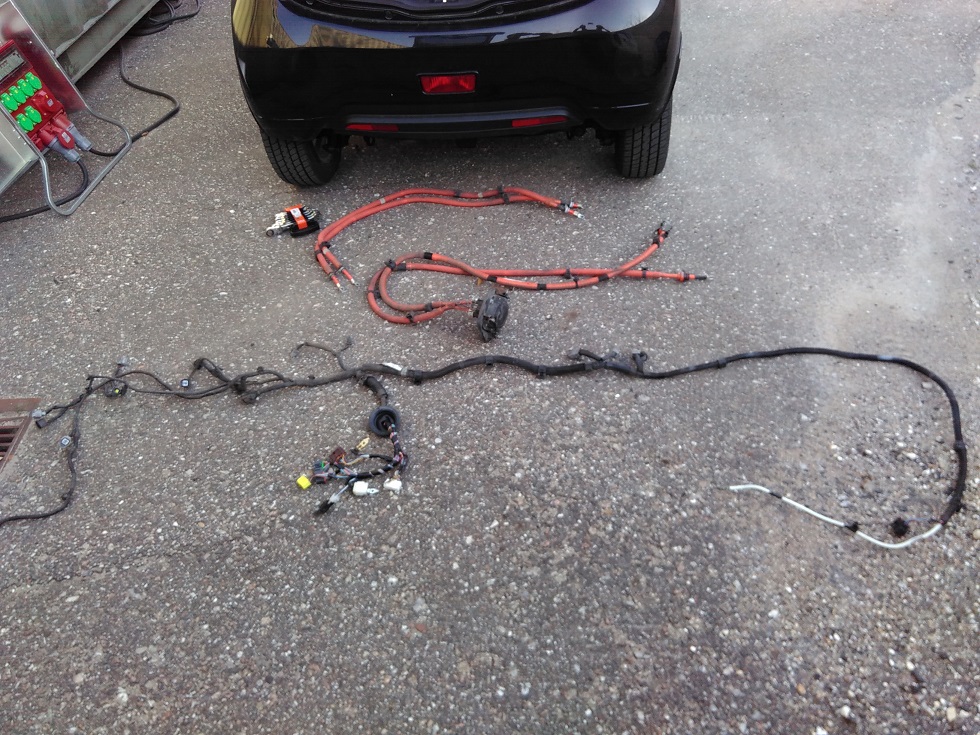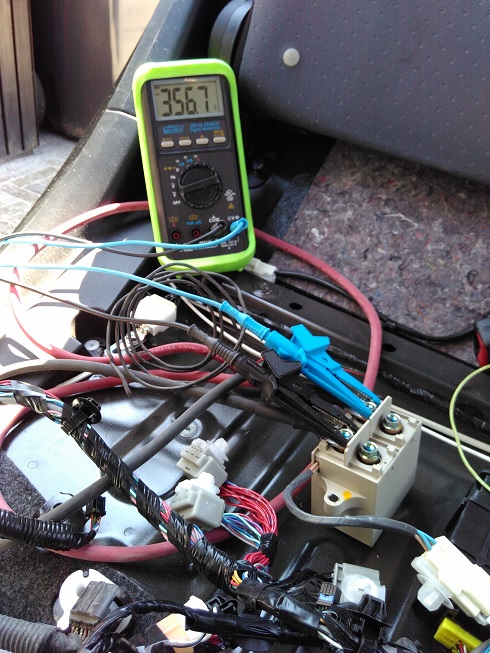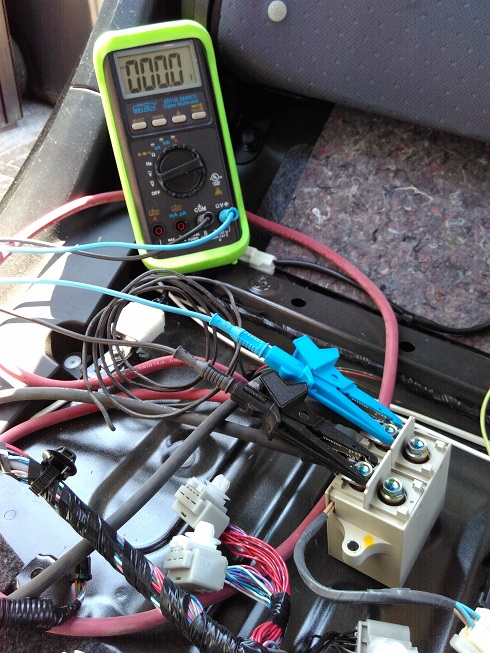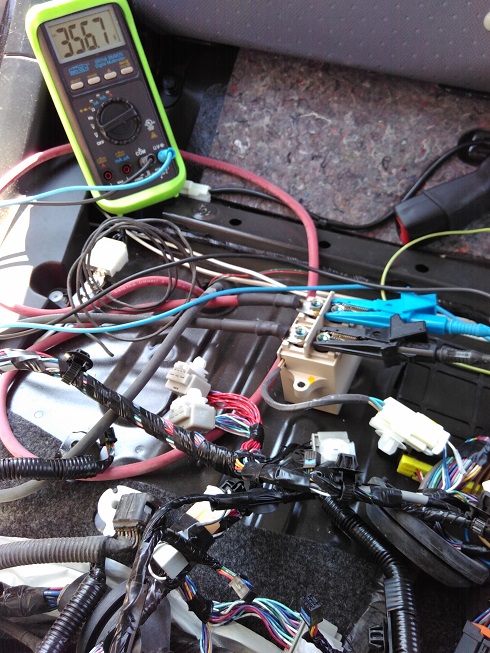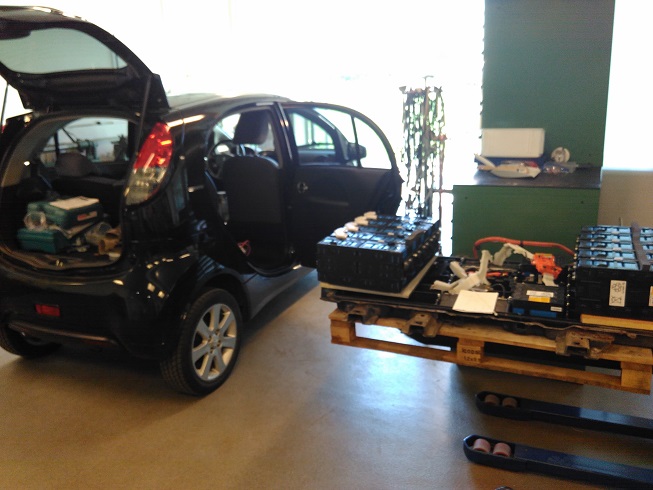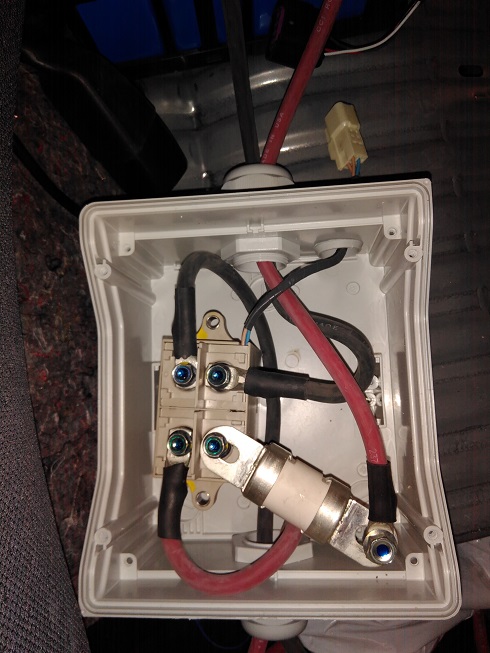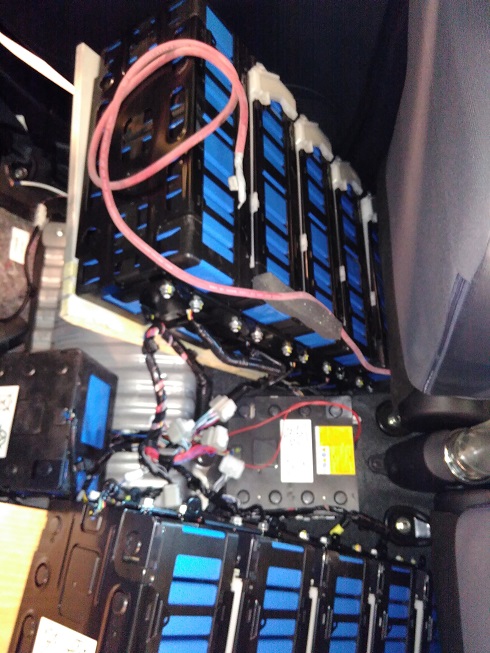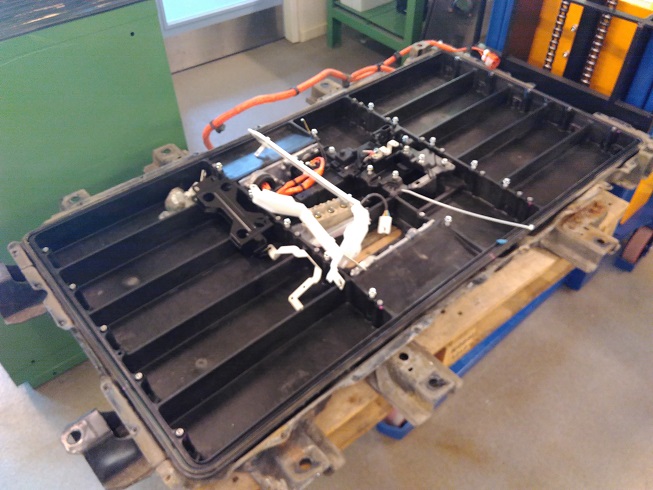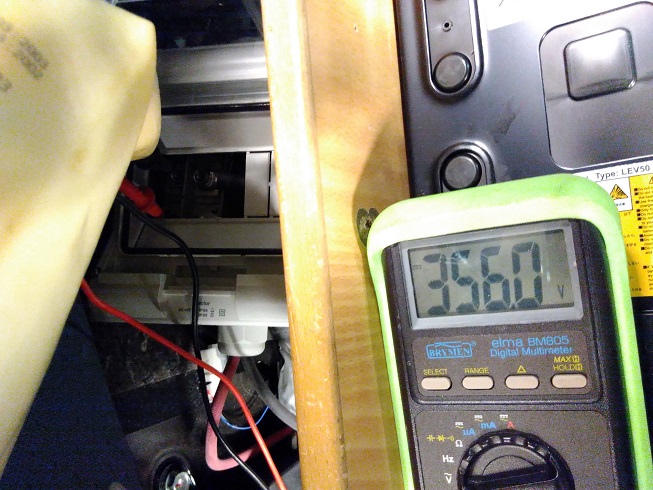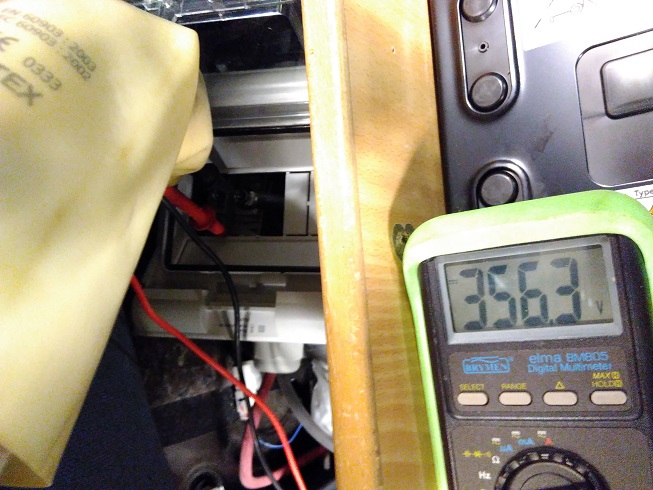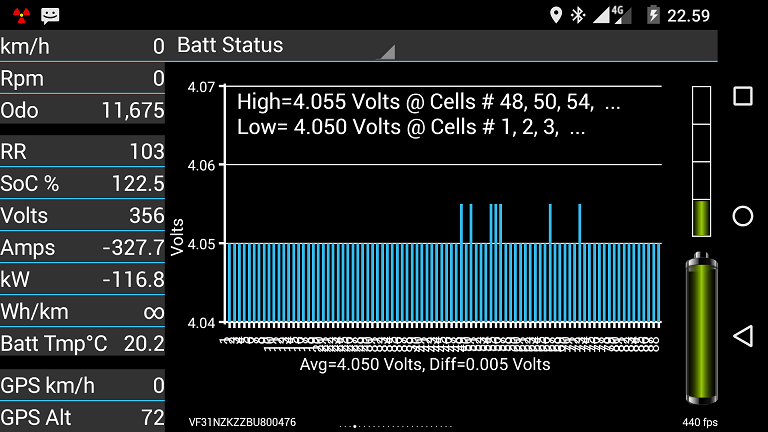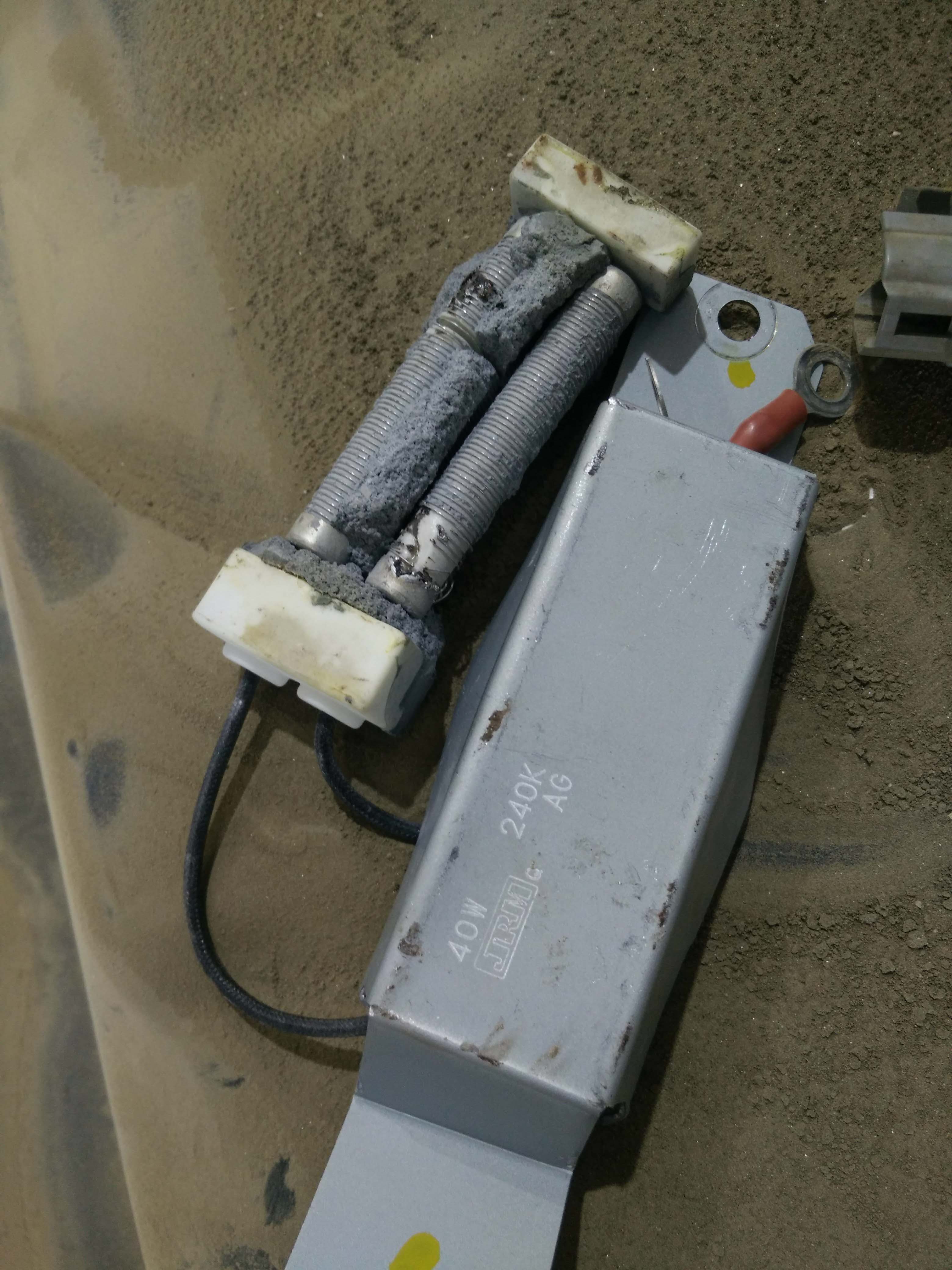So we pulled it off and got the second pack in the car and connected. Great job. It took lots of preparation and studying wiring diagrams.
In the last few days I studied the manual which I downloaded via this forum under the articles.
I found the diagrams of the BMU (BMS unit) and looked for how to hook up the second BMS from the wreck if possible without disturbing the ecu.
Summery of achievment at this point.
- The ev is now having 2 BMS installed and only one communicating to the ECU. The CAN signals can be switched on so one BMS transmits at a time. And it works - mostly.

- The ev has an additional contactor and fuse placed inside the cabin below the rear seats to the right (replaced the tire-fix). This is placed inside a box for increased safety.
- As trial the HV wiring is completed by unscrewing the chademo inlet, and plugging a chademo plug into the inlet. The wires from the Chademo plug are routed through ducting below the ev and up underneath the right hand side of the rear seats. At this location there's already a rubber seal which hosts another smaller 2-wire circuit. The chademo and HV wires are packed up tightly up and behind the left rear wheel cover/mud-guard.
- A complete set of wiring is pulled from the wrecked ev and placed underneath the metal covers of the rear seats. The used connectors and wires are sticking out: BMS, bms wiring, contactor, grounding, chademo relay..
.. and finally we got the second battery pack in the back of the car. Great job everybody. We were 3 guys placing each of the two main 5xLEV50-8 packs at each footwell in the back. They are support by a plate on the back side and leaning down on the "seats". The two LEV50-4 are placed in the center between the two main packs. This design placement worked out well with regards to lenght of the bms wires.
Starting up the EvBatMon or Canion, they are seamingly both able to connect to the main/stock battery below the ev. When flipping the switch which I put on the CAN wires along with two relays this makes the it possible to see the status on either battery, one at a time.
Before connecting the HV wires to the contactor and before even considering starting up the ev I used the monitoring app's to see the Voltage of the second battery pack, in order to match the same voltage by charging the main battery to same level of voltage. I reached a level of 0,3Volts apart and decided to try and connect the contactor and start up.
The ride back from the workshop was easy and indeed used little power.
Tests in time ahead will show more about range increase and other new discoveries.
Testing contactor after discovering how the ground-wire to the qc relay was actually activated from the ecu. This caused confusion at first as the QC contact in the main pack wouldnt engage nor the second contactor for the second battery. After more studying of the technical diagram I found which wire to access and so we got the contactors activated and access to the power of the main battery via this second contactor. Huge relief and celebration.

Measuring on the side of the contact connected to the Chademo inlet.
So the contactor is connected in parallel to the main contactor in the battery pack which means this turns on and off as the car is put in "ready" and off.
Showing the Voltage of the main battery pack.
Showing the contactor is indeed switched on.
Then pulling the ev in to the workshop area and bringing the second battery ready as the preparations of contactor, bms wiring, bmu and CAN signal was complete.
The contactor placed in box for safety. The fuse put directly on the contactor in this trial periode. When in regular use a more secure setup is needed.
Batteries placed inside the car and HV wiring between the cell-packs was carried out.
As the main battery had charged to similar Voltage levels as the second battery the HV wires on the second pack was connected to the contactor and contactor was disconnected. This offered the opportunity to have both voltages available on the contactor on either side ready to measure.
Voltage on the main battery below the car.
Voltage on the second battery inside the cabin.
OBD readings of the main battery status
OBD readings of the second battery status
Interestingly the Amps and kW seams negative. Unsure what to do about this. Any clue?





